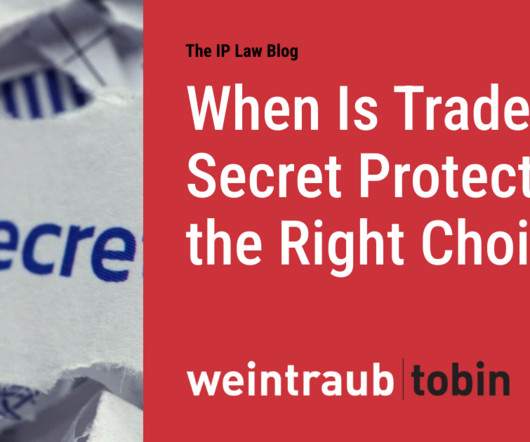When Is Trade Secret Protection the Right Choice?
The IP Law Blog
JANUARY 18, 2024
IP rights come in several forms: copyrights, trademarks, patents, and trade secrets. Copyright Office explains, copyrights protect “original works of authorship including literary, dramatic, musical, and artistic works, such as poetry, novels, movies, songs, computer software, and architecture.” As the U.S.











Let's personalize your content